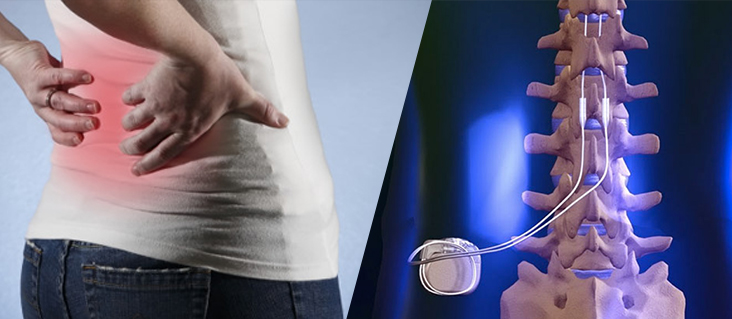
At the Center for Pain Relief, we treat patients with compassion and respect as we help them manage their pain. Located at the Medical Office Building at Pine Creek Medical Center in Dallas, our center primarily focuses on interventional pain management but also incorporates medical pain management.
[/vc_cta]
Spinal Cord Stimulation
This modality of treatment uses electrical impulses to block the pain sensation from being interpreted by the brain as such, and instead a more pleasant tingling sensation, akin to a gentle massage is felt, thus relieving pain.
This modality of treatment is indicated for patients who have failed to respond to the usual conservative pain treatments. This treatment will be generally considered for persistent back pain with or without extremity pain after back or neck surgery. It is also considered when further surgery is not likely to help. It is also considered for extremity pain due to complex regional pain syndrome. Prior to doing this modality, the patient is to have a psychological evaluation, a successful trial of spinal cord stimulation, and does not have a pacemaker, or implanted defibrillator or other contraindications.
The trial involves inserting a temporary electrode into your epidural space in your spine to determine if the stimulation covering the area of your pain causes at least 50% pain relief. This is done in the operating room under IV anesthesia and fluoroscopic guidance. The trial may last a minimum of 24 hours or as long as a week (varies from practitioner to practitioner). After the trial, the temporary electrode will be removed, usually in the office. If the trial is successful, then a permanent system will be placed, consisting of electrode implantation and implantation of a pulse generator (battery). This is also done under IV (intravenous) anesthesia and fluoroscopic guidance, but this time, a small cut in your skin is made in your back to implant the electrodes underneath your skin and another incision to implant the pulse generator. This is a day surgery procedure and you are sent home on the day of the procedure. Occasionally, your doctor might keep you in the hospital overnight for a variety of reasons.
There are risks to the procedure, while minimal, the possible complications are, infection, bleeding, headache, paralysis, loss of bowel/bladder function, spinal fluid leak, allergic reaction, new pain, air in the chest and lung collapse requiring insertion of chest tube, new pain, inability to control pain and even death. You are instructed to not eat after midnight of the day prior to your surgery, and take your usual medications with a small sip of water. If you are taking blood thinners, let us know so we can give you instructions on the timing of taking these medications. You are also instructed to take a nice shower with soap and water the night before your surgery and if possible the day of surgery.



